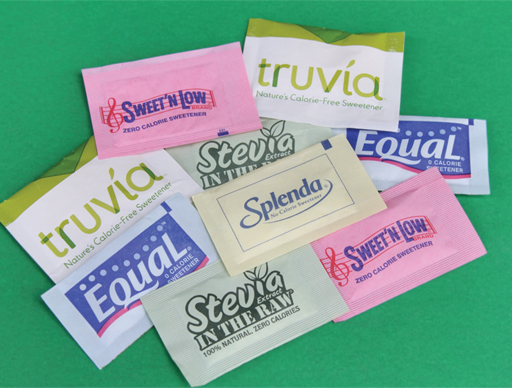4 Sweeteners
Sweeteners are used in some foods to reduce the energy from food, in an attempt to reduce obesity. There have been many headlines about the safety of sweeteners. In 2010, there was a Panel discussion about sweeteners and they came up with ten points in a document called ’The Science of Low Calorie Sweeteners – separating fact from fiction’.
Low calorie sweeteners are food additives that provide a sweet taste with very few calories (Table 4). Click on this link and read the document: The science of low calorie sweeteners – separating fact from fiction [Tip: hold Ctrl and click a link to open it in a new tab. (Hide tip)] (British Nutrition Foundation, 2010)
| Type of sweetener | Name | E number | Acceptable daily intake (ADI) mg/kg body weight |
Energy provided | Comments |
|---|---|---|---|---|---|
| Bulk | sugar alcohols: sorbitol mannitol xylitol |
E420
E421 E967 |
None specified | 2.4 kcal/g | Amounts 10g/100g or more require a warning statement as it can lead to gastrointestinal side effects in sensitive individuals. |
| Intense | saccharin aspartame acesulfame K (ace K) |
E954 E951 E950 |
5 40 9 |
zero zero |
200 times sweeter than sucrose Ace K: cannot be used by people with PKU |
| Intense | stevia | E960 | 4 | zero | Plant based: 200–300 times sweeter than sucrose |
| Intense | sucralose | E955 | 15 | zero | 600 times sweeter than sucrose |
| Intense | neotame | E961 | None specified | zero | 7000 times sweeter than sucrose |

